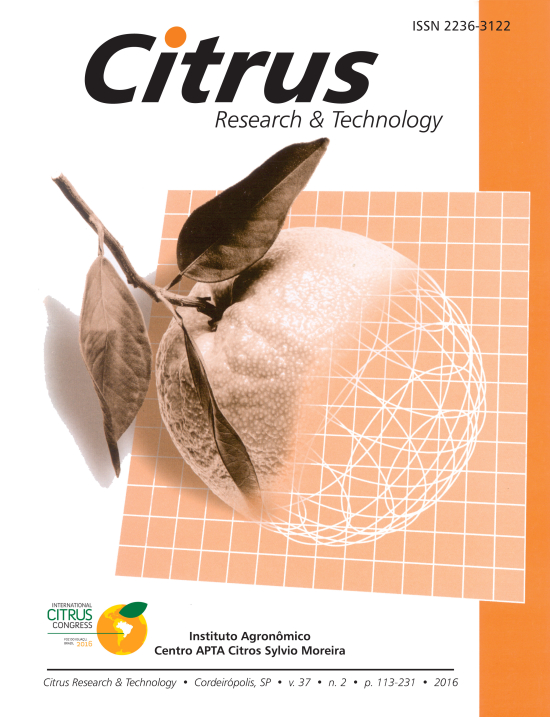Incidência e distribuição do huanglongbing no estado de São Paulo, Brasil
Incidence and distribution of huanglongbing in São Paulo state, Brazil
José Belasque Jr., José Carlos Barbosa, Cícero Augusto Massari& Antônio Juliano Ayres
Resumo
Desde 2004, ano da detecção do huanglongbing (HLB, ex-greening) no Brasil, foram realizados quatro levantamentos amostrais da doença no estado de São Paulo (SP). No primeiro deles, em outubro de 2004, 3,4% dos pomares foram detectados com a doença. O segundo levantamento, em março-julho de 2007, revelou que a doença estava em 12,9% dos pomares. No terceiro levantamento amostral, em março-abril de 2008, 18,6% dos pomares comerciais estavam com ao menos uma planta com HLB. Apesar das incidências relativamente elevadas de pomares com HLB, apenas 0,58% das plantas do Estado foram estimadas como sintomáticas. Em março-abril de 2009, no quarto levantamento, a doença foi encontrada em 24,0% dos pomares do Estado. Quanto ao número de plantas sintomáticas, a incidência estimada foi de 0,87% em 2009. Em 2009, apesar da doença estar presente em todas as zonas citrícolas paulistas, e em mais de 24% dos pomares paulistas, a mesma encontrava-se fortemente concentrada em aproximadamente vinte municípios das regiões de Araraquara e Araras. De 2005 a 2009 os Governos Federal e Estadual publicaram legislações específicas para que a expansão do HLB pudesse ser ao menos minimizada. Essas ações, embora necessárias para minimizar o avanço do HLB em SP, não foram largamente empregadas e, como consequência, a doença continua a progredir no Estado.
Palavras-chave
Abstract
Since 2004, when huanglongbing (HLB or greening) was first found in Brazil, four sample surveys for the disease in São Paulo state (SP) were carried out. In October 2004 symptomatic trees were found in only 3.4% of the orchards. The second sample survey was carried out in March-July of 2007 and 12.9% of the orchards were estimated as infected. In the third sample survey, in March-April 2008, 18.6% of the orchards were estimated presenting at least one symptomatic tree. Although the incidences of HLB-affected orchards were relatively high in SP, in 2008 only 0.58% of the trees were estimated to be infected. During March-April 2009, corresponding to the fourth sample survey, the disease was estimated to be present in 24.0% of the orchards in SP. Moreover, the number of symptomatic trees in the state in the same period year was estimated to be 0.87%. Although the disease was detected in all SP state zones and it was estimate to be present in more than 24% of the citrus orchards, the disease was still greatly concentrated in Araraquara and Araras areas, in the Central and South zones, respectively, in 2009. Since 2005 the federal and state governments are publishing legal tools intended to be used to decrease the HLB progress in the state. These actions, besides being needed to minimize the progress of HLB in SP, were not extensively applied and, as a consequence, the disease incidence is still rising in the state.

